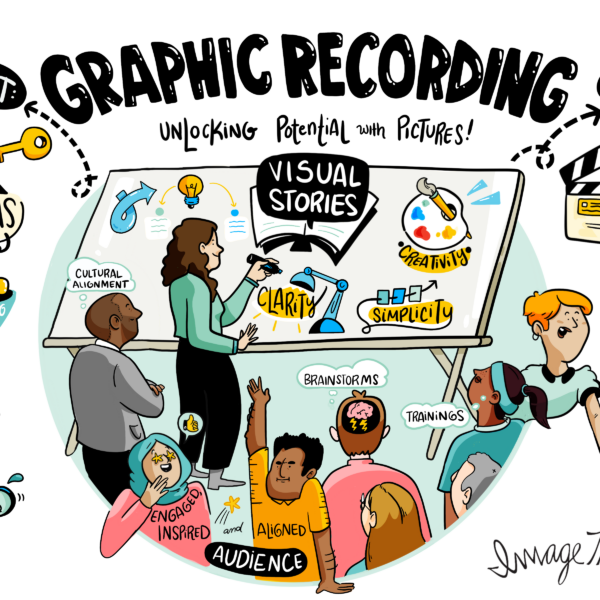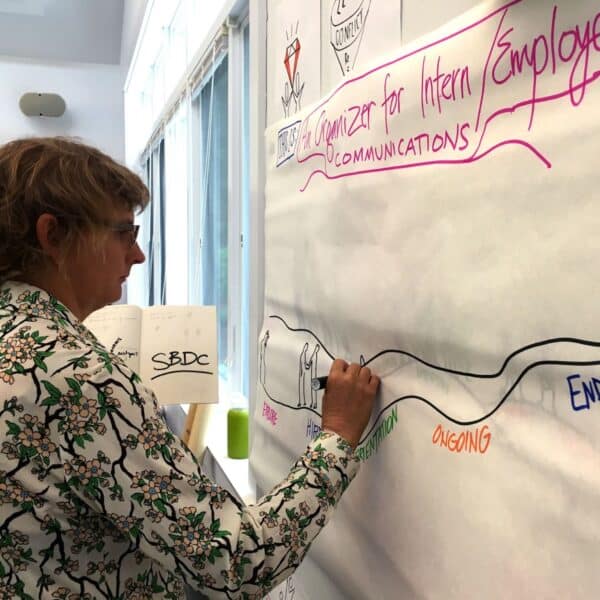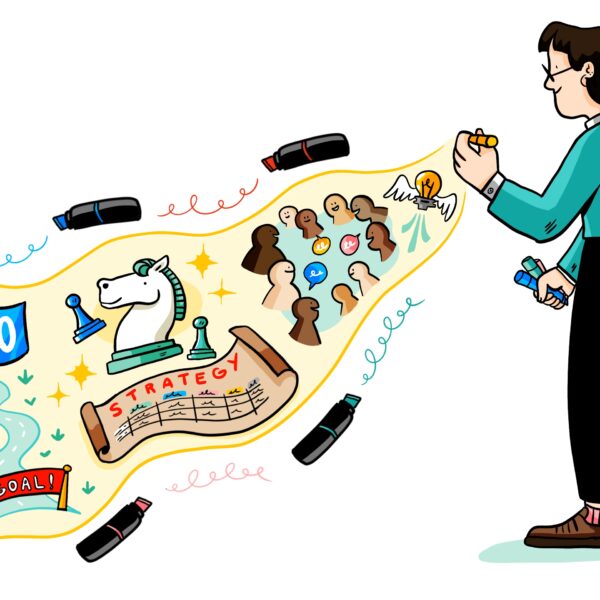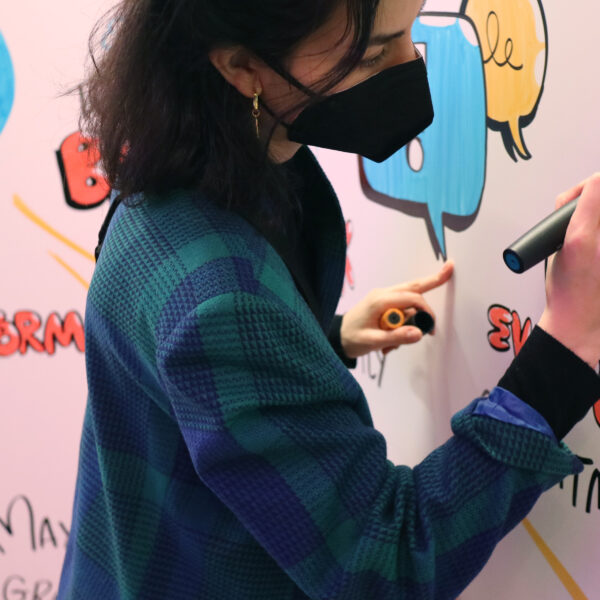In a recent session with a national sales team, tension filled the room.
The team had just come through a difficult acquisition. Leadership was fragmented. Each person carried a different definition of success—and it showed.
By midday, something shifted. Not because of more discussion, but because they could finally see the strategy. Mapped out visually. Clarified together. Anchored in their own language.
What began as scattered ideas turned into a clear, shared direction.
That’s the impact of graphic strategy—a tool we’ve helped leadership teams master for over 15 years.
What Is a Graphic Strategy?
A graphic strategy is a visual approach to aligning people, priorities, and processes—as they’re being shaped.
It goes far beyond traditional charts or slides. At ImageThink, we use graphic facilitation to capture complex business discussions live, translating them into clear, memorable visual maps.
The result? A shared strategy that stakeholders don’t just understand—they own.
Unlike static decks, these visuals become living artifacts—used to drive alignment long after the meeting ends.
Why Visual Alignment Matters for Teams
Alignment isn’t about nodding heads in a meeting. It’s about what happens after—how people move forward, make decisions, and stay connected to the goal.
In most organizations, that’s where alignment breaks down. Language can become a barrier:
- Engineers speak in systems
- Marketers in stories
- Executives in outcomes
Visual alignment bridges those gaps with a common language that’s easy to understand and hard to forget. It turns assumptions into shared understanding—and teams into collaborators.

Core Benefits of a Graphic Strategy
When done well, a graphic strategy amplifies alignment across every layer of the organization:
- Faster collaboration: Visual clarity speeds up decision-making
- Higher retention: People remember visuals up to 30% more than text
- Stronger ownership: Teams are more likely to act on what they co-create
- Greater insight: Visuals reveal interdependencies and gaps
- Scalable communication: One image can align stakeholders at every level
At ImageThink, we don’t just illustrate strategy—we help organizations turn vision into momentum.
How to Build an Effective Graphic Strategy
Creating a graphic strategy isn’t about making things look good. It’s about making complex ideas make sense—fast.
Our approach at ImageThink includes:
- Live visual mapping in real-time conversations
- Strategic frameworks like OKRs and journey maps
- Facilitated reflection to ground goals in real insights
- Theme development to unify priorities and drive inspiration
- Evergreen visuals designed for ongoing use and visibility
Every visual we create is crafted to support strategic thinking, decision-making, and organizational alignment.
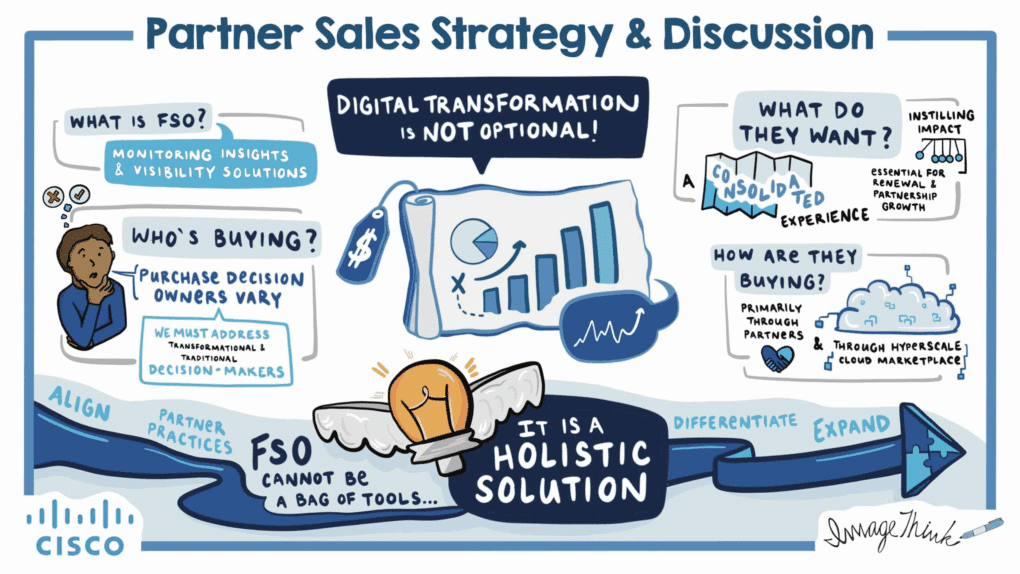
Explore how Cisco scaled visual strategy across global teams
Real-World Results: NYU School of Global Public Health
NYU’s School of Global Public Health had a bold mission—but no unified plan to get there. With new hires, siloed departments, and competing priorities, alignment was a challenge.
ImageThink facilitated a single-day strategy session that brought the team together—visually. Through structured activities and live graphic capture, we helped NYU GPH:
- Align on shared goals
- Identify new cross-collaborations
- Build a visual roadmap for execution
The result? Strategic clarity, renewed momentum, and full buy-in across the team.
Six months later, when NYU GPH consolidated several centers into one, they came back to realign again—proof of how graphic strategy creates tools that last.

Avoiding Common Pitfalls in Graphic Strategy
To unlock its full potential, graphic strategy must be treated as a strategic asset, not a decorative recap. Here are common missteps we help clients avoid:
- Treating visuals as afterthoughts: A graphic strategy is built with the conversation—not after it
- Excluding key voices: If everyone can’t see themselves in the plan, alignment fades
- Letting the visuals disappear: Great strategy visuals should live on walls, shared drives, and decision-making sessions
When visuals are integrated into the process—not just the presentation—they become tools for real change.
The Future of Graphic Strategy
In today’s hybrid work environment, visuals aren’t a nice-to-have—they’re mission-critical.
As collaboration shifts across platforms and time zones, graphic strategy is evolving:
But the real future of graphic strategy isn’t just in the tools—it’s in the way teams work. More human. More transparent. More aligned.
Conclusion: Turning Ideas Into Action
A strategy that lives in a slide deck is easy to forget. A graphic strategy lives where it matters—in minds, meetings, and moments of decision.
At ImageThink, we’ve helped hundreds of organizations visualize their path forward, align their teams, and spark momentum when it matters most.
If your organization is navigating complexity, change, or growth, graphic strategy isn’t just helpful—it’s essential.
